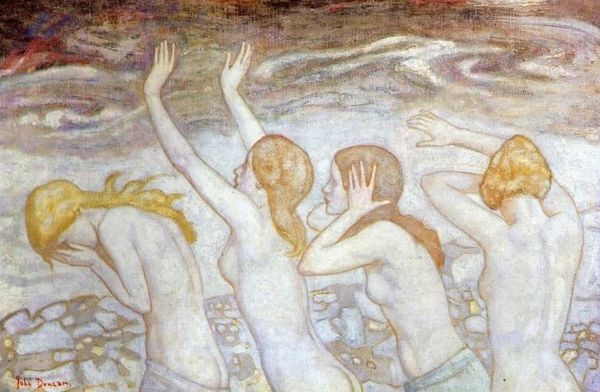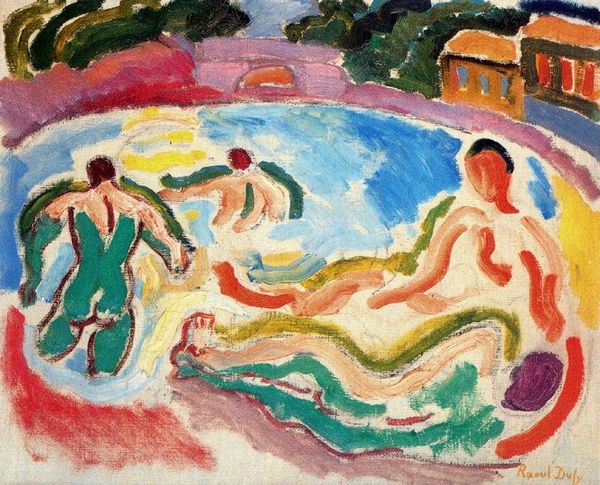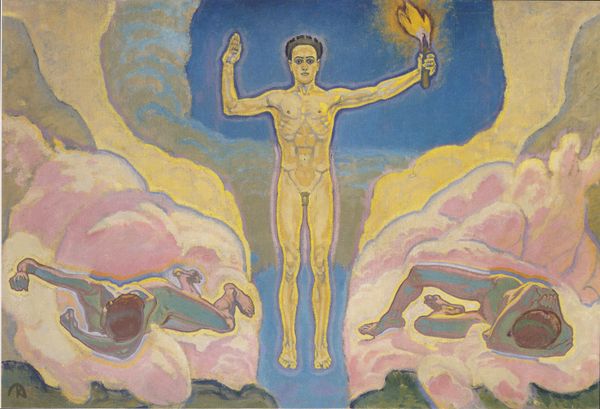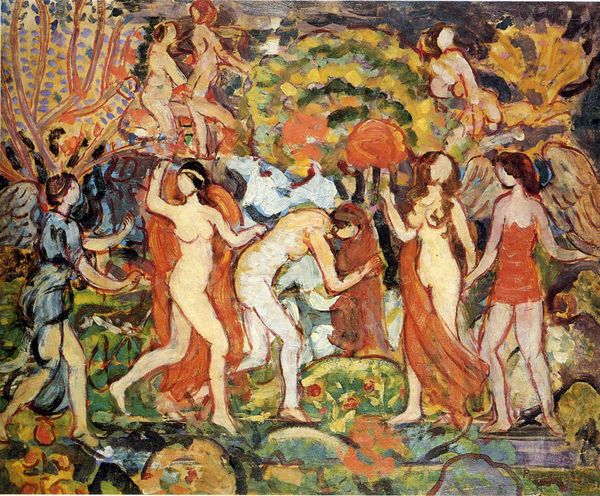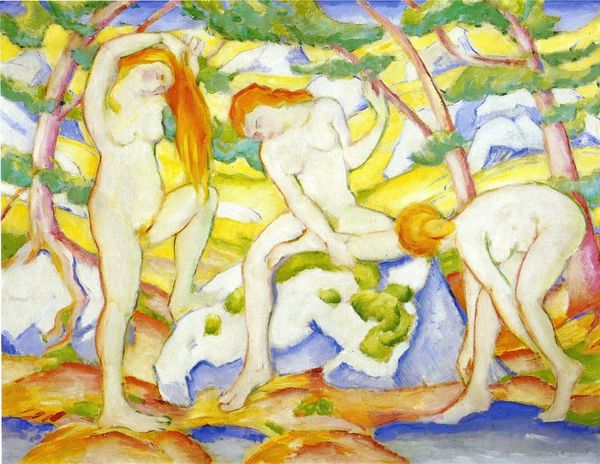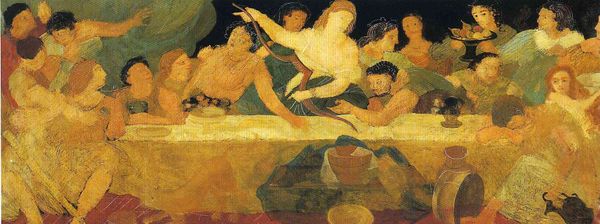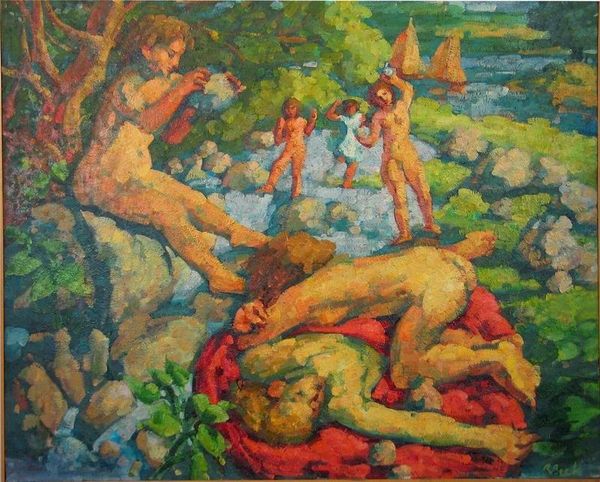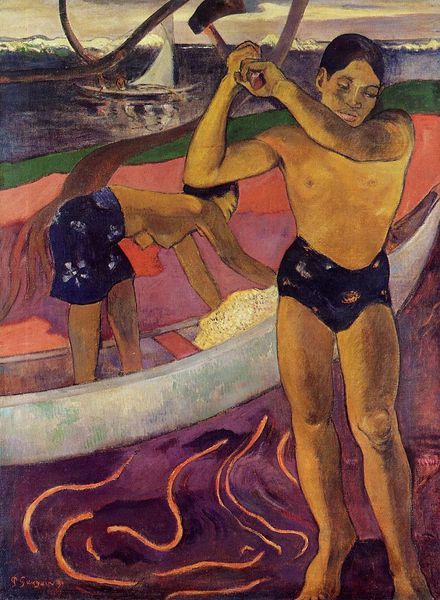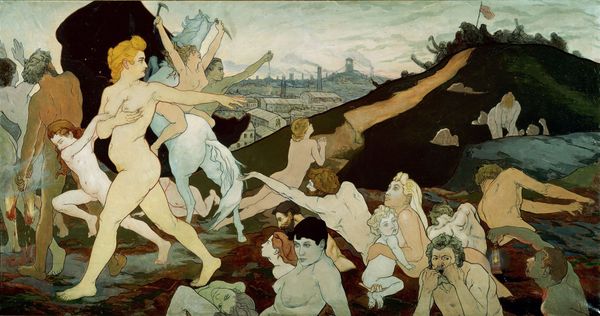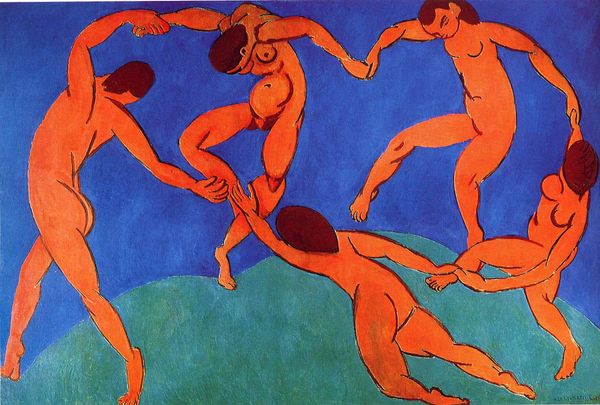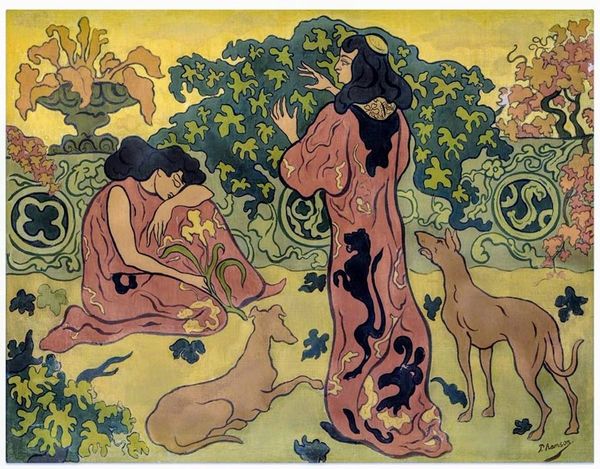
painting, oil-paint
#
allegories
#
allegory
#
symbol
#
painting
#
oil-paint
#
landscape
#
figuration
#
female-nude
#
group-portraits
#
naive art
#
mythology
#
symbolism
#
history-painting
#
nude
#
modernism
#
expressionist
Copyright: Public domain
Curator: Let's talk about "A Day," painted in 1910 by Ferdinand Hodler, here at the Kunstmuseum Bern. Editor: It's strangely calming, despite the almost harsh rendering of the figures. The cool colors help create this detached atmosphere. Curator: Hodler employed oil paint, applying it in ways that flattened the picture plane, emphasizing surface and line. Look at the almost industrial production of these nude figures and notice how it emphasizes a repetitive motion. We could analyze the painting’s construction: preparatory drawings, the canvas used, the availability of pigments. Hodler, in many ways, built this composition much like the work of factory processes. Editor: Right, and structurally, that central figure is crucial, echoing the rhythm and mirrored symmetry found throughout the composition. Those carefully balanced poses are mesmerizing. Curator: There’s an interplay between idealization and real human labor within the depiction of the female form here, reminiscent of early factory work performed by women. The social context influenced not just Hodler, but the models who probably depended on his art to provide work and income, or access. How do we address that socio-economic reality, how do we look at its influence in creating the shapes and figures here? Editor: I would argue, in his flattening of forms and attention to patterns, we observe how the artistic consciousness absorbs and refracts larger themes of order and regulation. Also, the overall pastel palette contributes greatly to the dream-like state of the overall scene, further amplifying its otherworldly, symbolic aura. Curator: I see this painting as reflective of the changing role of female labor in society, masked through symbolism and allegory, hinting at the collective experiences that made modernity possible. Editor: Indeed. On one hand, this art brings attention to society by highlighting shape, forms, symmetry, and figures; while on the other, this art uses industrial painting methodologies. It provides for interesting study. Curator: Ultimately, reflecting upon material production can enable a richer understanding and relationship between the painting and its era.
Comments
No comments
Be the first to comment and join the conversation on the ultimate creative platform.
